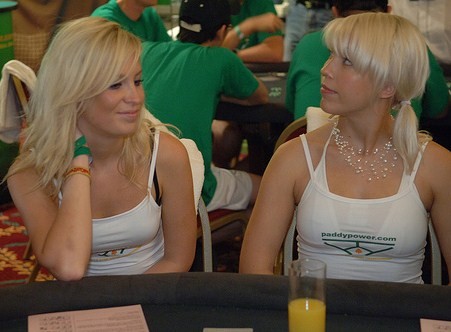|

Join our Newsletter
& get our free guide Starting Hands Revealed
We hate spam too!
We value your privacy and never share your email. All our emails have an opt-out link. Click it, and you will never hear from us again. |
Playing against short stackers
Short staking means to buy-in for the minimum which is for instance 20 big blinds on pokerstars. So in a NL100 hold'em cash game, these short stacks have $20, whilst the maximum buy-in is 100bb or $100, and the average stack is around $60. There are two types of short stackers. First there are the novice players who want to learn and to minimize their risk. If you are a beginner, it is a good idea to buy-in for the minimum before you get accustomed to the numerous online poker traps. Second there are the systematic "short stackers robotic players" with various levels of skills. Here we discuss how to play against the advanced short stackers, and it is easy to distinguish them as they are regulars at the online tables. Understanding the Short StackersThese short stackers are of course human beings, as poker robots are prohibited from online poker. But they act in a very robotic, nearly "brainless" manner. Their strategy consists in playing a fold or push allin preflop strategy. They either fold or bet their entire stack, and rarely check, never calling a bet unless it is for their entire stack. Hence they eliminate a large part of the strategic aspect of the game, for themselves at least. They put all the burden of the tough decision on you. The online poker community usually considers these players annoying. Annoying because if for instance a player limps or even raises 4bb preflop, when the short stacker raises him allin for an additional 16bb, he is forced either to forego his bet or to enter a big gamble (unless he has KK+, in which case he is happy with the raise). These plays confront other players with unusual risk/reward situations, which often turn out to be coin flips for 20bb. And most people prefer to play the more standard way of seeing reasonably priced flops before involving so many chips. Annoying because they buy-in for the minimum and leave the table if they double up. Short stackers can never inflict significant losses to a deeper stack or provide large profit potential, but once they won an allin bet they disappear, so you have no chance to get your money back. Here we offer some hints on how to deal with the good short stackers. As we said their main move is to 3-bet allin preflop, or sometimes to open push allin preflop. A variation is that sometimes they just raise or call preflop and push allin at the flop. The main reason why these strategies can be profitable if well executed is that their source of profits is fold equity, because cautious player fold too much as they do not want to gamble 20bb. But they do not properly calculate if folding is the right option. Responding to Short StackersThe way to combat them is to know when to call or when to raise them. First you should know your short stackers. When you sit at a table, always check for short stackers. If there is a short stacker on your near left, you must be cognizant of that fact and ready for his raises. You must observe them and determine their range for shoving. Take notes each time they are involved in a hand. Each short stacker is different and has a different range. If you do not have notes on one of them, the vpip/pfr statistic will also give a good idea of his range. For example if vpip/pfr = 6/6, the likely range is {TT+,AJ+} (vpip=5.88%). If vpip/pfr = 8/8, a likely range is {88+, AT+}. A good short stacker will use a reference allin range {TT+,AJ+} and add some flexibility to it, becoming looser at opportunistic times, so his vpip/pfr might be around 7-8%. In the common case where you raise 4bb preflop and a short stacker 3-bet you allin and let us assume no other player involved in the hand for simplicity, there is 25.5bb in the pot and you need to call 16bb, so you can call with any hand with 38.55% equity or more. Let us first assume that his allin range is {TT+, AJ+}. Using pokerstove, we find that all the hands with equity greater than 38.5% versus this allin range correspond to the range {22+,AQ+}. If his shoving range is looser such as {88+,AT+}, the calling range is {33+,AJ+}. If his range is tighter at {JJ+, AQ+}, the calling range is {55+, AK+}. If you are dealing with a rock type range {KK+, AK}, the calling range is {44+,AKs}. If other players are involved or if there is more dead money in the pot, your calling range should be even looser. Note that all the calling ranges above are quite similar. Generally speaking, you can call with pocket pairs except the very low ones, and top aces. |









